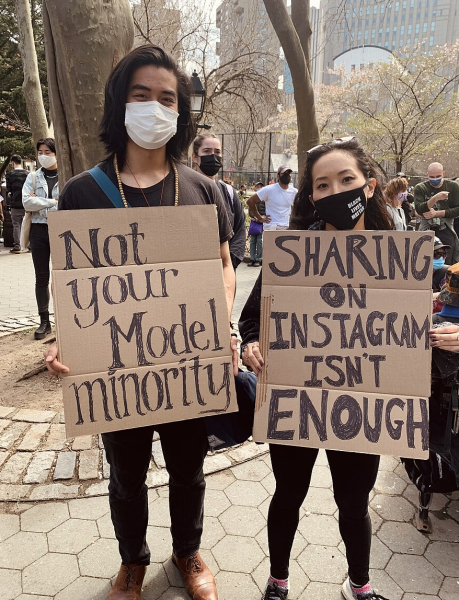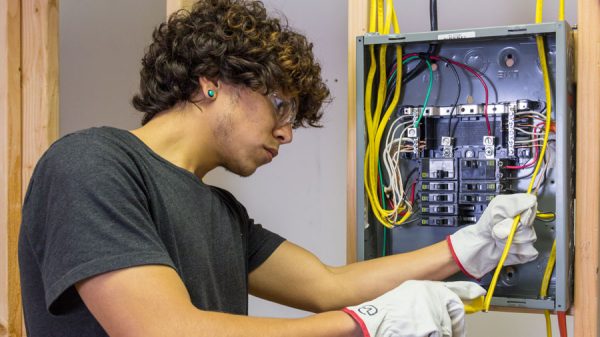Unpacking the health gap
Women face discrimination in the work place, in academia…and in their own doctor’s offices
March 24, 2021
Women today are some of the most powerful beings on the planet. We have to deal with irregular hormone balances and bodily struggles once a month for an average of 50 years, all for the hopes to literally give life to another being. That being said, it is pretty safe to say that we know our own bodies. So why is it that when women go to their doctors with significant concerns about their bodies and their health, they are not taken as seriously as men, statistically? This is a rarely discussed topic referred to as “the health gap,” a serious issue that must be solved.
Similar in nature to the well-known wage gap, the health gap refers to differences in treatment between men and women when it comes to medical care. This topic is rarely discussed, despite how common it is. Many women are told by doctors that they are simply “overreacting” or “thinking too deeply into things” when they go to their doctor with genuine concerns.
A situation like this happened with Jennifer Billock, a writer for the BBC. In her 2018 article “Pain Bias: The Health Inequality Rarely Discussed,” when she went to the doctor, complaining about severe pain in her chest and abdominal region, her doctor had told her that “like a lot of women, she was paying too much attention to her body” and recommended her to just relax and ignore the issue. When her consistent pain had continued, she ended up going to the emergency room with severe chest pains and a heart rate hitting 220 beats per minute (the average resting heart rate for women being 60 – 100 beats per minute). The ER crew reassured her though that it was “just a panic attack.” They then gave her a Xanax and sent her home. After nine years of struggling with this pain every month, she finally figured out that she was not alone. Severe chest pains, along with other symptoms, is a sign of endometriosis.
Endometriosis is a fairly common disease impacting between 6 and 10% of all females, according to the National Institutes of Health. Endometriosis occurs when tissue that normally grows inside of a uterus grows outside of it instead. This tissue can spread into one’s lungs and chest, causing chest pains and racing heart rate, like in Billock’s case. An Endometriosis diagnosis, according to speakendo.com, can take anywhere from 6-10 years to diagnose. Many times it is often just dismissed as “having bad period symptoms,” which is especially true for younger women. On average, 1 out of 3 women have to consult 3 to 4 doctors before properly diagnosing this disease.
This, unsurprisingly, is not the only area in medicine where women are viewed as being overdramatic. World-famous athlete Serena Williams was one of these women and it almost caused her to lose her life. Williams became a mother in 2017 when she gave birth to her daughter, Alexis. In a 2018 CNN article about her birth experience, Williams knew she had a pre-existing condition that made her prone to blood clots at the time of her giving birth. When she was having trouble breathing during labor, she “immediately assumed that she was having another pulmonary embolism,” which is when a blood clot gets lodged in an artery in a lung. She alerted a nurse on what was happening and knew that she needed a CT scan and a blood thinner. But the nurse told her that the pain medication must have confused her, and instead, the doctor had performed an ultrasound on her legs. After the ultrasound had revealed nothing, she then went for a CT scan and it was there that several blood clots were revealed to doctors. She is not the only woman to experience complications and near-death experiences during and after labor.
In results collected from the CDC, about 700 women die each year in the United States due to pregnancy or delivery complications, and complications affect more than 50,000 women annually. Not only that, but the risk of pregnancy-related death is 3 to 4 times as high for Black women as it is for white women. This, according to Dr. Ana Langer in an article written by the American Heart Association, is because “Basically, Black women are undervalued. They are not monitored as carefully as white women are. When they do present with symptoms, they are often dismissed.”
All of that being said, women need to be listened to when it comes to their bodies. The female body is genetically designed to endure extreme amounts of pain at once. That means, when we come to our doctor with genuine concerns about the pains in our bodies, we deserve to be listened to and not dismissed because “we are thinking into it” or “we are just being overdramatic.” We are not and we do not deserve to feel as though we are.












